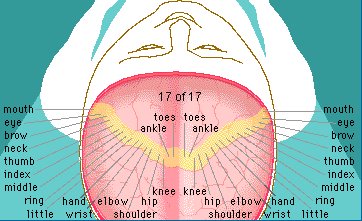The infant posttraumatic stress disorder of hyperarousal and dissociation thus sets the template for later childhood, adolescent, and adult posttraumatic stress disorders (PTSD), all of which show disturbances of autonomic arousal (Prins, Kaloupek, & Keane, 1995) and abnormal catecholaminergic function (Southwick et al., 1993). In each, "chronic, inescapable or uncontrollable stress may lead to impairment of the normal counter-regulatory mechanisms producing hyperactivity of the hypothalamic-pituitary-adrenal and sympathetic nervous systems, which could lead to excessive anxiety, feelings of hopelessness and defeat, and depression" (Weinstock, 1997, p. 1). The latter symptomatic triad represents unregulated parasympathetic activity that is associated with dissociation. At any point of the lifespan, dissociative defensive reactions are elicited almost instantaneously.
http://www.agsp.de/html/a20.html
Wednesday, July 18, 2007
Subscribe to:
Post Comments (Atom)

http://www.windyweb.com/stop.htm














No comments:
Post a Comment